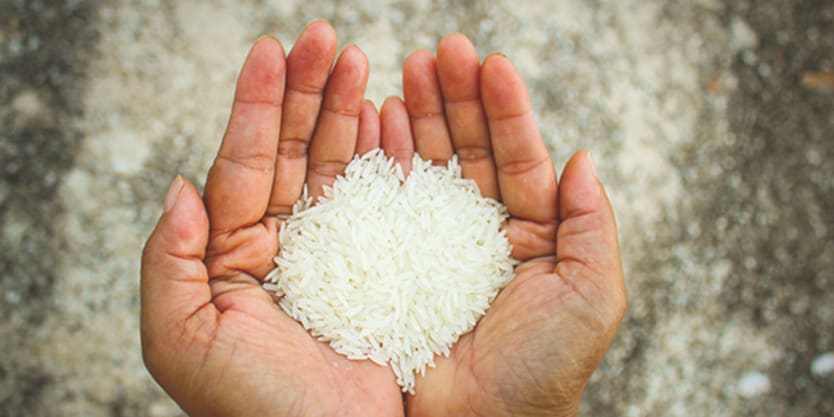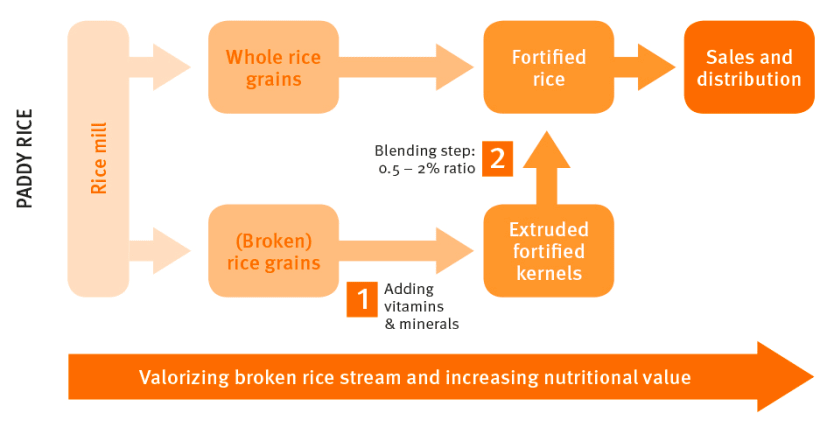
Micronutrient deficiencies are one of the main causes of poor health and disability, and it affects over 2 billion people worldwide. Diets that lack essential vitamins and minerals increase morbidity and mortality rates across the lifespan and impair physical growth and cognitive development.
Consequently, deficiencies have long-ranging effects on health, learning ability, and productivity, and negatively impacting health care costs and gross domestic product. Micronutrient deficiencies are mainly caused by suboptimal dietary intake hence multiple micronutrient deficiencies often co-exist.
More on farming and agricultural practices
► Q&A: Serve the farmer first, says 2019 World Food Prize winner
► Gates Foundation discusses gender investment at Seeds of Change
► Which seed companies are looking out for Asia's smallholder farmers?
These deficiencies are not only a concern among developing countries. Although they are more frequent and severe among disadvantaged populations, they also represent a public health problem in industrialized countries. Moreover, the increase of calorie-rich but nutrient-poor diets in industrialized countries and those in social and economic transition, decreases the likelihood of consuming the recommended daily intake of essential nutrients.
Ultimately, the best way to prevent micronutrient malnutrition is to ensure consumption of a balanced diet. Yet, the reality is that this is often not happening, and can be very challenging to realize, especially when a balanced diet is not affordable or accessible to vulnerable groups or the dietary habits are not in place.
This is why the Lancet series on maternal and child undernutrition, the Copenhagen Consensus, and the Scaling Up Nutrition movement all consider tackling micronutrient deficiencies by implementing sustainable food fortification interventions and bundled micronutrient provisions as among the most cost-effective interventions with demonstrated impact.
Rice and its promising role to help fill the nutrient gap
Fortification of staple foods is a proven and cost-effective intervention to increase vitamin and mineral intake among general populations. It involves the addition of micronutrients to staple foods post-harvest to restore micronutrients lost during processing, for example milling, and food preparation — in addition to increase, with the aim of increasing the levels of specific vitamins and minerals lacking in the general diet to improve public health.
Globally, vast success has been achieved with improving public health by fortifying staples as wheat and maize flour, oil, and salt, for example, with reducing neural tube defects through folic acid fortification and the prevention of mental retardation and goiter by adding iodine to salt. Food fortification data is tracked to support decision-makers in their efforts to improve the quality of national fortification programs.
But the challenge to end malnutrition and achieve Sustainable Development Goal 2 on ending hunger and all forms of malnutrition, will not be reached without additional efforts.
There is now great momentum for fortified rice to contribute to improving nutrition thanks to technical developments, a robust evidence base, and lessons learned from previous rice fortification programs. Furthermore, in 2018, the World Health Organization published its guidelines on fortification of rice with vitamins and minerals in public health.
Rice, as the number one staple in the world, offers indeed a promising vehicle to contribute to filling the nutrient gap. Rice is affordable and culturally engrained. More than 3 billion people across the globe rely on rice as a staple food, many of which live in developing countries where rice contributes as much as 75% of daily energy intake.
Different ways to make rice more nutritious
Upcoming events around rice fortification
Global Sustainable Rice Conference 1-2 Oct., Bangkok
World Rice Conference 10-13 Nov., Manilla
Global Summit on Food Fortification 21-23 March 2020, Bangkok
Micronutrient Forum 2020 23-27 March 2020, Bangkok
Rice can be made more nutritious all along the value chain. Brown rice, bio-fortified rice, parboiled rice, and rice fortified with rinse-resistant coating technology are all proven methods in making rice more nutritious. The most robust technology to add several essential vitamins and minerals to rice in a sustainable and cost-effective way, is extrusion technology. DSM co-developed hot extrusion technology to produce fortified rice, and it is now globally the most used method to make fortified rice.
With extrusion technology, multiple vitamins and minerals — as well as other key nutrients lacking in the diet such as lysine and fiber — can be added to rice. Therefore, specific nutritional needs can be met, as the composition of the fortified rice is customized to meet specific public health needs.
The produced fortified rice looks, smells, cooks, and tastes the same as nonfortified rice, meaning fortified rice shows high consumer acceptability and no change in dietary habits or preparation methods is required. Another advantage is that as the added nutrients are embedded in the fortified extruded kernel, they are less affected during transport, storage, washing, and cooking, and show good overall stability.

Finally, rice fortification is a cost-effective method to improve micronutrient intakes. The overall price increase due to fortification depends on the scale, fortification levels, price of rice, and blending ratio — how many fortified kernels are mixed into the regular rice; typically, this is 1%, but can also be 0.5-3%. In Costa Rica, almost 100% of rice is fortified with seven micronutrients yet the price increase due to fortification is only 0.9%. In countries with voluntary or social safety net fortification, the price increase is often higher, especially at the start of a program with increases usually around 1-5%.
A comprehensive approach is essential
Making rice more nutritious by fortifying it with essential vitamins and minerals is a promising intervention for the many rice-eating countries facing micronutrient deficiencies. However, it is not a silver bullet; a successful rice fortification program alone will not eliminate all micronutrient deficiencies.
Rice fortification typically takes place in a phased approach. An introduction phase is important to investigate the feasibility of rice fortification in the local context — this can require a local operational and acceptability trial, following initial feasibility and operational studies.
Conducting a rice landscape analysis is highly recommended to establish how to best integrate rice fortification into the rice supply chain. Additional programs are often necessary to scale-up rice fortification through appropriate channels, such as private sector markets and government safety net programs. Working closely with key policymakers to develop a constructive policy environment, including rice fortification standards, is a critical component to any successful fortification program and must be undertaken early in the process.
DSM is working with partners, governments, research institutes, and key stakeholders to enable rice fortification to improve nutrition. We look forward to working together on making rice more nutritious and contribute to SDG 2.
This focus area, powered by DSM, is exploring innovative solutions to improve nutrition, tackle malnutrition, and influence policies and funding. Visit the Focus on: Improving Nutrition page for more.
